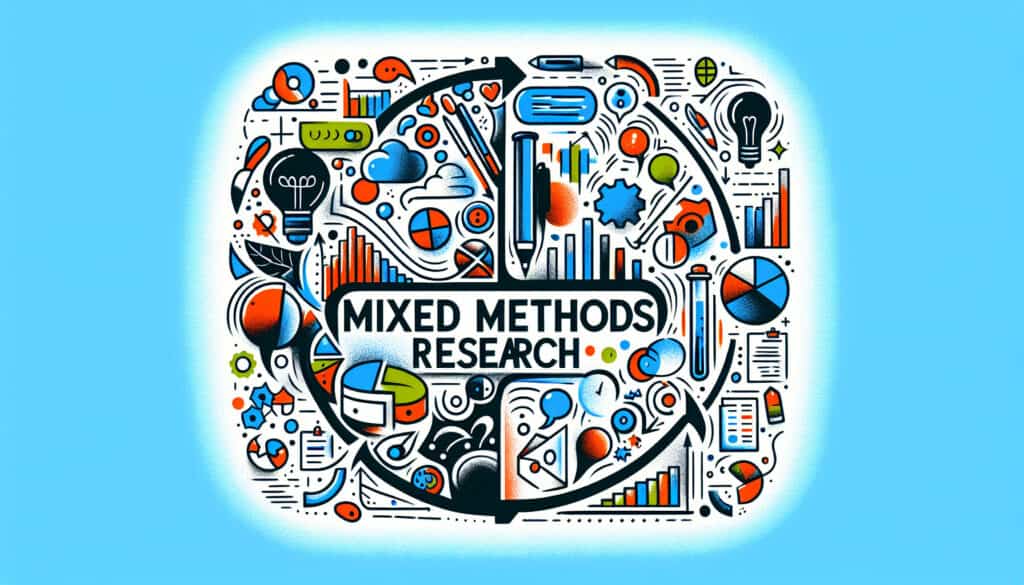Combinar métodos de investigación cualitativos y cuantitativos en un único estudio.
- Metodologías: Ergonomía
Investigación con métodos mixtos

Investigación con métodos mixtos
- Análisis de varianza (ANOVA), Metodología, Investigación y desarrollo, Análisis estadístico, Experiencia de usuario (UX), Diseño centrado en el usuario
Objetivo:
Cómo se utiliza:
- A research approach where the researcher collects and analyzes both qualitative and quantitative data. The goal is to gain a more complete understanding of a research problem than either method could provide alone.
Ventajas
- Provides a more complete understanding of a research problem; Can increase the validity and reliability of the results.
Contras
- Can be complex and time-consuming to conduct; Requires expertise in both qualitative and quantitative methods.
Categorías:
- Resolución de problemas, Diseño de producto
Ideal para:
- Gaining a deep understanding of a complex research problem, such as the user experience of a new product.
Mixed Methods Research involves integrating qualitative and quantitative data to examine research problems from multiple angles, making it highly effective in various sectors, including healthcare, education, and product design. For instance, in product design, this methodology can be employed during the user experience research phase, where designers might collect quantitative usage statistics from surveys alongside qualitative feedback from focus groups or user interviews to comprehend how users interact with a prototype. This method is particularly useful in iterative design processes, allowing teams to make informed changes based on a synthesis of numerical trends and personal experiences. Stakeholders such as designers, engineers, user experience researchers, and marketing teams often collaborate in this approach, as each can contribute distinct perspectives, bridging the gap between user needs and product functionality. By triangulating data from diverse sources, the findings can enhance the validity and reliability of the insights, thereby improving decision-making and innovation in product development. This methodology can lead to more centrado en el usuario designs that resonate with end-users, ultimately addressing both their functional requirements and emotional responses to a product.
Pasos clave de esta metodología
- Define the research question that incorporates both qualitative and quantitative aspects.
- Select appropriate qualitative and quantitative methods that complement each other.
- Determine the sampling strategy for qualitative and quantitative data collection.
- Implement qualitative and quantitative data analysis techniques concurrently or sequentially.
- Integrate qualitative and quantitative findings to construct a comprehensive understanding.
- Evaluate the consistency and contradictions between qualitative and quantitative results.
- Refine conclusions based on the combined insights from both data sets.
Consejos profesionales
- Design mixed methods studies with clear definitions for qualitative and quantitative phases to avoid ambiguities in data integration.
- Create a cohesive data triangulation strategy that maximizes the strengths of each method while addressing their individual weaknesses.
- Involve cross-disciplinary teams to enrich the analysis process, integrating diverse expertise for enhanced contextual understanding.
Leer y comparar varias metodologías, recomendamos el
> Amplio repositorio de metodologías <
junto con otras más de 400 metodologías.
Sus comentarios sobre esta metodología o información adicional son bienvenidos en la dirección sección de comentarios ↓ , así como cualquier idea o enlace relacionado con la ingeniería.
Contexto histórico
1986
(si se desconoce la fecha o no es relevante, por ejemplo "mecánica de fluidos", se ofrece una estimación redondeada de su notable aparición)

Publicaciones relacionadas
Simulación de Monte Carlo
Pruebas basadas en modelos
Comprobación de modelos
A prueba de errores (Poka-Yoke)
Pruebas del perfil de la misión
Calculadora de METS a calorías